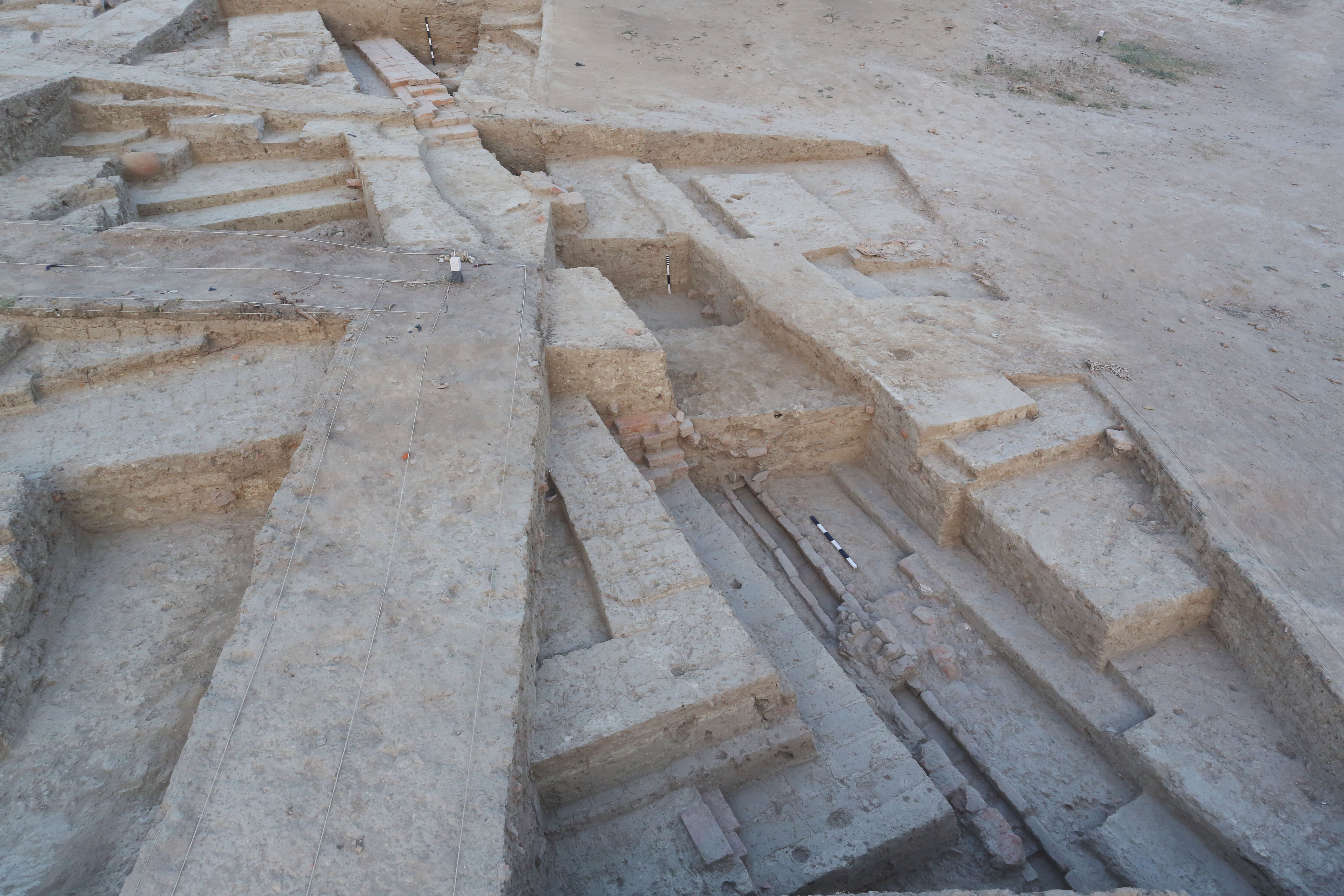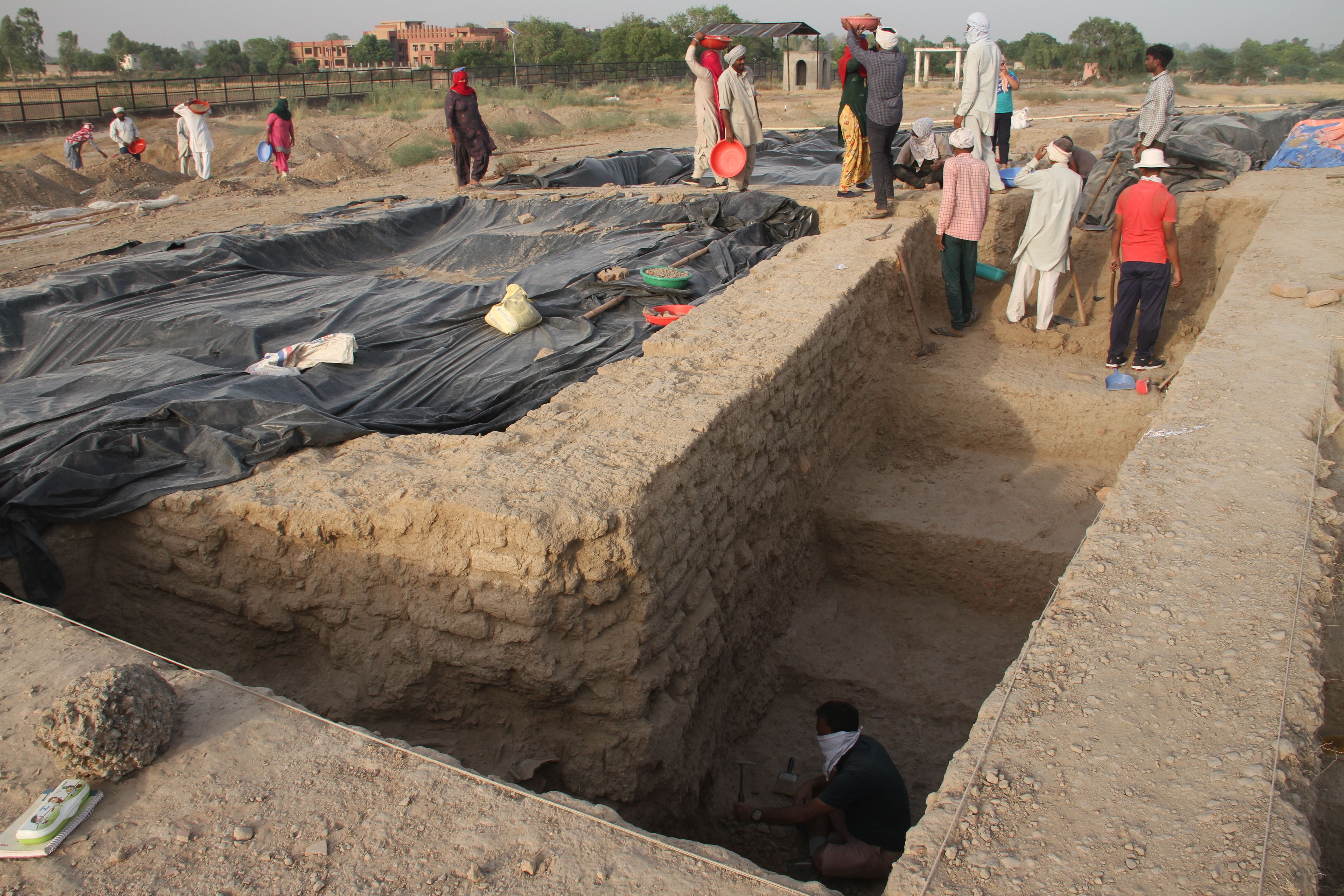heyOn a bright sunny day, under a clear blue sky, a curiosity gripped my mind as I leaned against the wall of a mazar – an iconic tomb – atop a mound, gazing at the vastness of the historic site of Rakhigarhi. took. “Why are we digging Rakhigarhi again?” I asked the director of excavations, Sanjay Manjul. Eventually, the site was subjected to systematic excavations for eight field seasons – between 1997–2000, 2012–2016 and 2021–22 – with each excavation lasting two to five months or longer. One would think that several excavation attempts are sufficient to comprehensively reconstruct the historicity of an archaeological site such as Rakhigarhi in the Hisar district of Haryana. But the reality is that in archaeology, the cycle of revision and re-examination depends on the future prospects of a site being investigated. And there are immense possibilities in Rakhigarhi.
Thus, the research objectives of each investigation and its subsequent findings are more important than the number of excavations already undertaken. For example, other major settlements of the Indus Valley Civilization, such as Mohenjo-daro and Harappa (now in Pakistan) and Dholavira in the Kutch district of Gujarat, have been subject to extensive excavations over the decades. Yet, archaeologists have only been able to scratch the surface of the story of this great civilization. Therefore, the answer to why we are excavating Rakhigarhi for the ninth time entirely depends on finding out the known and unknown missing links.
Read also:
tapping into the known
In his report, archaeologist Amarendra Nath said that the archaeological remains covering Rakikhas, Rakhishahpur and their surrounding farms in Hisar, 150 km from New Delhi, are divided into seven archaeological mounds from RGR 1 to RGR 7. Excavation at Rakhigarhi, These mounds (mounds indicating burial settlements) have been a part of the daily life of the local people who have established a relationship with them as part of their daily routine. Accustomed to finding Harappan artefacts such as seals, beads and terracotta bangles, the residents of Rakhigarhi use these mounds for a variety of purposes: cremation/burial, grazing and even cricket grounds for village children Also in the form of. They have established a relationship not only with archaeological remains but also with archaeologists.
For decades, archaeologists, scholars and young researchers have been traversing villages and farms in search of broken potsherds and artefacts. The villagers now know that, like them, archaeologists view these mounds as sacred buried treasure – waiting to be unearthed with the touch of their trowels.
The journey of archaeological exploration at Rakhigarhi began when archaeologist Suraj Bhan included the site in academic data with his PhD dissertation in 1968–69. Prehistoric Archeology of Saraswati and Drishdwati Valleys, His report emphasized large-scale exposed structures, typical Harappan-painted pottery and associated cultural material, which attracted more academic attention from archaeologists. However, three decades later, in 1998, the site was first subjected to scientific and systematic archaeological investigation. Amarendra Nath, former director of the Archaeological Survey of India, led the investigation for three consecutive seasons from 1997 to 2000 (Amarendra Nath)Rakhigarhi: The Saraswati-Drishadwati Divide, a Harappan Metropolis in Archeology 28: 39-45).
Six mounds, except mound RGR 3, were brought under investigation during the three field seasons. RGR 1 was labeled as a center of lapidary (polishing, cutting and shaping stone into ornamental objects and jewellery) because of the large quantity of finished and unfinished pearls, a high percentage of stone debits and a bead-making furnace. was detected. RGR 7 excavated Harappan burials, while RGR 6 unearthed an early Harappan settlement. But the excavations at RGR 2 yielded some of the most striking evidence, such as fortification walls, podiums, fire altars and a matrix of streets and lanes that linked each other in a typical Harappan grid pattern. This excavation was certainly important as it yielded primary data without which the following efforts would have been incomplete.
Twelve years after this monumental achievement, Rakhigarhi was re-examined between 2012 and 2016 by Professor Vasant Shinde of the Deccan College for Post-Graduation and Research, Pune. The investigation mostly focused on four mounds, namely RGR 2, RGR 4, RGR 6. and RGR 7. Excavations at RGR-7 yielded important finds of ancient dna The Harappan context brought about a paradigm shift in the general understanding of the past and brought the question of ancient ancestry to the fore.
The seven seasons – from 1997 to 2000 and 2012 to 2016 – shifted the focus away from Mohenjodaro and Harappa, the civilization’s most prominent megacities. Preliminary findings at Rakhigarhi placed it on a similar footing as the two earlier sites, which developed from the ‘Regionalization Era’, indicating the period c.5000 BCE to 2600 BCE (according to Robin Coningham and Ruth Young, The Archeology of South Asia: From the Indus to Ashoka, c. 6500 BCE to 200 CE.) to the ‘Unification Age’, the period represents the Mature Harappan period from c.2600 BCE to 1900 BCE. (JG Schaefer, Indus Valley, Baluchistan and Helmand Traditions: Neolithic through Bronze Age
According to the ASI report published by Nath, there is a pre-construction period of 5440 BP (BP = before present), followed by Early Harappan period around 4570 BP and Mature Harappan period around 3900 BP.
However, there were many aspects, such as the overall understanding of the site plan known in the case of Dholavira, Banawali, Harappa etc. An understanding of intra-site and inter-site relationships and land-use patterns remained unknown, not to mention unpublished data from previous efforts for the eighth and now ninth season of excavations.
exploring the unknown
From 2021-2022, the Pandit Deen Dayal Upadhyaya Institute of Archeology and Excavation Branch II of the ASI carried out the excavation under Sanjay Manjul. Mound RGR 3, on which the tomb rests, was left unexcavated by the previous team. The nearly 13-metre high mound, strewn with pottery, many other artefacts and exposed Harappan brick structures, gives the impression that it was an extremely important piece in a larger puzzle that was left unfinished.

During this excavation, some trenches have been made on the south side. Season (2021–2022) A burnt brick and mud brick wall was discovered around a residential compound, with a brick-lined drain outside. The fineness of the wall’s masonry and mud bricks made it clear to the team that the area held many answers.
Also RGR 1 was brought under the scanner. Evidence was found of a major road connecting sub-streets with workshops and residential complexes. The furnaces were the highlight. Working with mud-brick is never easy, and finding a mud-brick wall on either side of a road, enclosing a structural complex, was for me a moment out of a history textbook.

Debitage, finished and unfinished beads, hearths etc. gave information about the craft activities at this site. But what was significant was a complete unbroken stratigraphy of Mound RGR 1, which suggests continuous, unbroken occupation since the Early Harappan period.

However, it was RGR 7—represented as archaeological remains buried in a privately owned field north of RGR 1—that furthered the established narrative. Manjul’s initial idea, following his discovery at Sinauli, was to advance ancient DNA studies and establish a proper context for the burial. But just below the graves—close to 10 cm—evidence of earlier habitation was unearthed. In simple terms, this suggested that the area occupied by the Early Harappans was at one point abandoned and later converted into a burial ground during the Mature Harappan period. “This means that the spread of the Early Harappan deposits is much wider than once thought,” Manjul said after looking at the findings, posing as possibly the largest Harappan civilization.
Compared to the drier climate currently associated with Rakhigarhi, the ancient site was rich in vegetation, and Drishvati’s ‘paleochannels’ (remnants of ancient rivers and streams) drained the landscape. The present-day Palaeolithic remains are the remains of these Palaeolithic periods. The current season (2022-23) aims to explore multiple land-use patterns within the range of these seven mounds and beyond – in the light of the new findings at RGR 7. RGR3 and RGR1 are also being investigated during this field season, which will help in understanding the inter-site and intra-site dynamics. Only time (and the trawls) will reveal new facets of Rakhigarhi this season.
Disha Ahluwalia is an archaeologist and Junior Research Fellow at the Indian Council of Historical Research. She tweets @ahluwaliadisha. Thoughts are personal.
(Edited by Zoya Bhatti)